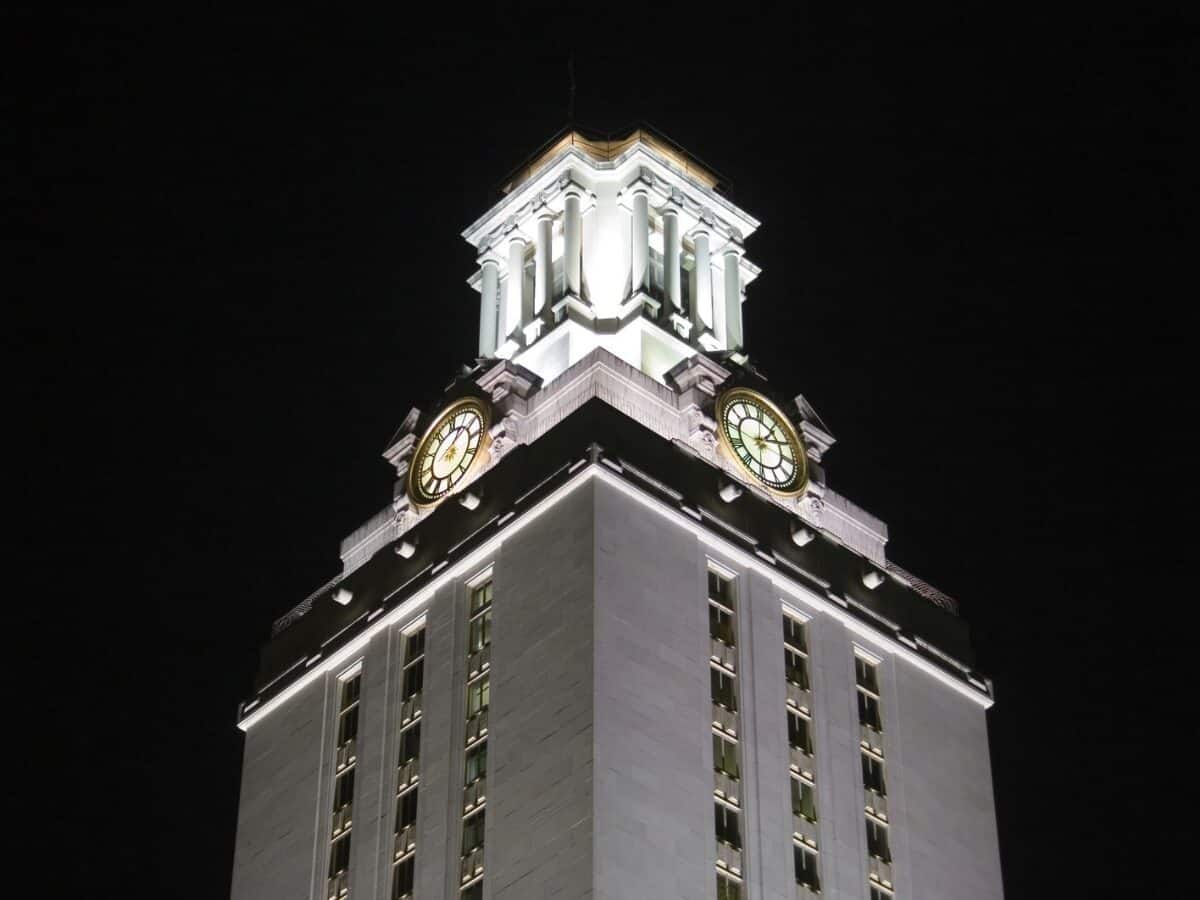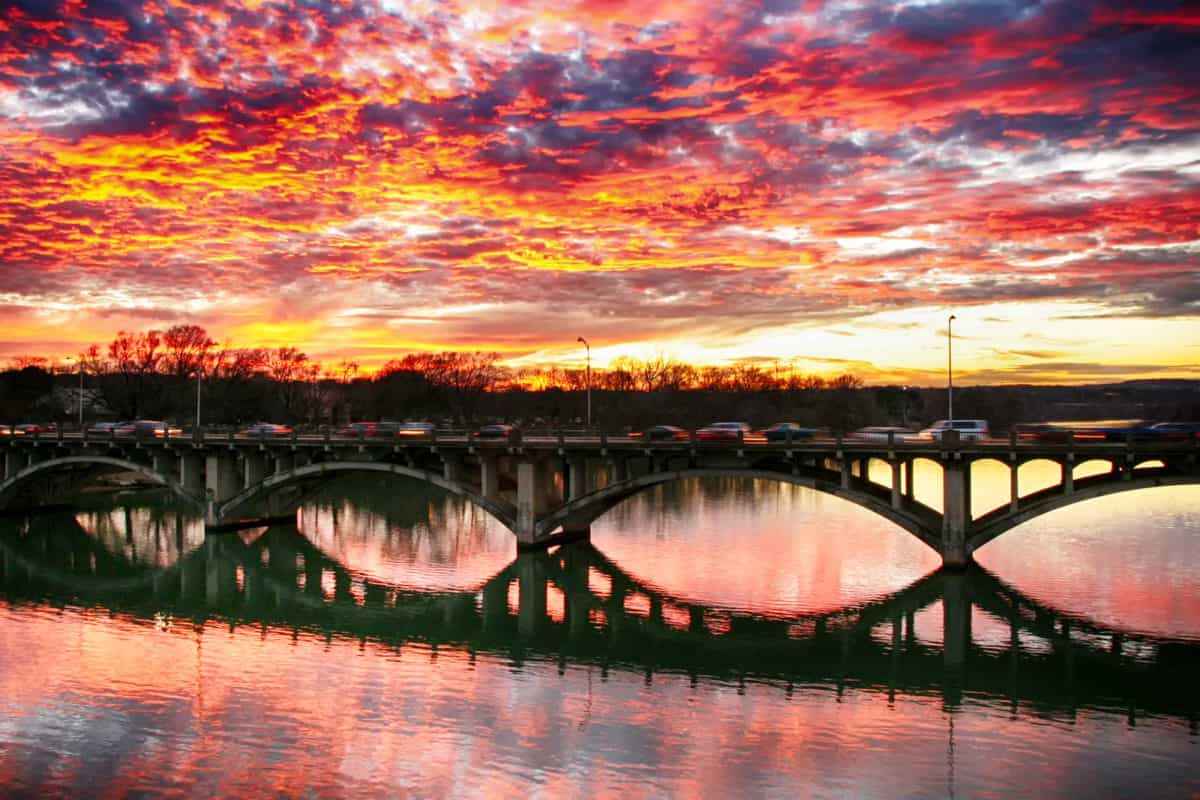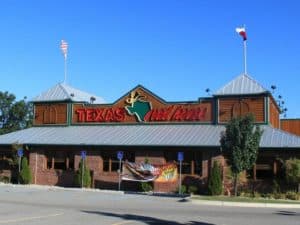Texas is a vast state—the second largest in the U.S.A—so you might wonder if the time zone remains the same. If you’re planning a long trip, it’s good to know if Texas falls in a single time zone or is split. We’ve looked into whether Texas is PT, ET, EST, or CT.
Most Texas follows CT—Central Standard Time for most of the year and Central Daylight Time in summer. Three counties operate under MT, or Mountain Time—Mountain Standard Time, with Mountain Daylight Time observed during DST. No part of Texas observes Pacific Time or Eastern Time.

Is Texas In PT, ET, EST, Or CT?
Thanks to its huge size, covering a total area of 268,596 square miles, Texas covers two time zones. Depending on which section of the state you’re in, you are likely to be in either Central Standard Time or Mountain Standard Time. The time zones Texas follows are:
- Central Standard Time (CST) – six hours behind Coordinated Universal Time: UTC –06:00
- Mountain Standard Time (MST) – seven hours behind Coordinated Universal Time: UTC –07:00
- Central Daylight Time (CDT) – five hours behind Coordinated Universal Time: UTC –05:00
- Mountain Daylight Time (MDT) – six hours behind Coordinated Universal Time: UTC –06:00
The time zones also shift due to daylight saving time. When the clocks are moved forward an hour in spring, areas following DST will move from Standard time to Daylight time. In Fall, the clocks are set back an hour to local standard time.
The Introduction Of Time Zones In The United States
The U.S.A. is divided into six time zones, and these areas create belts of standardized time across the states and the various U.S. territories. Initially, America had many different time zones. In the later part of the 1800s, every train station set its own clock time.
As you can imagine, this made scheduling train journeys a nightmare and was the cause of many collisions. One of these collisions ended up killing fourteen train passengers.
A series of four standardized time zones were created to develop a more consistent schedule for the trains. These new time zones were initialized on the 18th of November, 1883. This was known as General Time Convention and was initially unpopular as many small towns felt they now had to live on ‘railway time.’
Two more time zones were added to include further states and territories. There are now six standard time zones in the U.S.A:
- Pacific Time
- Mountain Time
- Central Time
- Eastern Time
- Alaska Time
- Hawaii-Aleutian Time
Time Zones In Texas
These first four time zones were introduced: Pacific Time, Mountain Time, and Central Time. This was before the later introduction of Daylight Savings Time, so there was no need to use Standard to separate from Daylight time.
At that time, Texas, except for the two westernmost counties, fell under Central Time. El Paso and Hudspeth County fell under Mountain Time.
Between 1919 and 1921, the South Plains and Panhandle regions were included in Mountain Time. After this two-year period, they returned to Central Time.
When the current time zones were introduced, Texas remained unchanged. Most of Texas still falls under Central Standard Time, with only El Paso County and Hudspeth County following Mountain Standard Time.
However, a third county—Culberson County in the northwest—unofficially follows Mountain Standard Time.
Due to its position in the central southern part of the U.S., no part of Texas falls under either Eastern Time or Pacific Time.

Daylight Savings Time In Texas
Daylight Savings Time has not always been a constant in the U.S. and was introduced due to the first World War. Later, it became up to states and cities to decide whether they would observe DST.
Eventually, it was extended due to energy crises and to save oil. Texas observes DST, as only two states, Hawaii and Arizona, have laws allowing them to keep fixed time.
Daylight Savings Time In Texas During World Wars
Daylight Savings Time was first introduced during World War 1 in 1918. Initially, the purpose of the Standard Time Act was to help the country save electricity for seven months during the year. It was repealed in 1919 and reinstated in 1942 during World War 2.
During World War 2, the official name of Daylight Time was changed to War Time; for example, Central Daylight Time was known as Central War Time. Daylight Savings Time was implemented across the year.
Daylight Savings Time In Texas 1945-1966
After the end of the War Time era, the federal law did not force states or cities to observe DST, and places would choose for themselves if they would use DST. However, this led to similar problems of each place setting their times, resulting in clocks being reset constantly over even a short journey.
While some Northern and Eastern States sometimes kept DST, states like Texas observed only Standard Time. In some cases, States would not use DST, but some cities within that state would, making for much confusion. Transportation groups lobbied for standardized and uniform time zones.
Daylight Savings In Texas After 1966
To bring the time zones up to a standard that prevented confusion and made long and short-haul transport easier to organize, the Uniform Time Act was passed in 1966. The Act required states to begin DST on the last Sunday of April and end it on the Last Sunday of October.
States could refuse to follow this Act, provided every part of the state followed the same time guidelines. Texas remained part of the standard DST observance. It continued to do so when DST was extended in 1975, thanks to the ongoing oil crisis.
Daylight Savings In Texas After 2007
After March 2007, DST was extended again to most States, including Texas, between four to five weeks. It currently comes into effect on the second Sunday of March and completes on the first Sunday of November. The idea was to conserve further energy, but it is uncertain if there have been any significant benefits.
Time Zones Of Texas Cities
Most Texas cities fall under Central Time, including the state capital Austin. However, several significant cities and areas do follow Mountain Time, as they are located in the three counties which do so. Those cities include:
- El Paso, El Paso County
- Horizon City, El Paso County
- San Elizario, El Paso County
- Sierra Blanca, Hudspeth County
- Van Horn, Culberson County
Time Zone In Austin
The capital city of Texas, Austin, is located in Travis County. It’s the county’s seat and the largest city within it. Due to its position toward the center south side of Texas, it falls under Central Standard time and Central Daylight Time.
Time Zone in Houston
Houston is currently the most populated city in the state of Texas and the fourth-most in the entire U.S. This huge Southeastern city is the county seat of Harris County. It follows Central Standard Time and Central Daylight Time.
Time Zone in Dallas-Forth Worth
The metroplex known as Dallas Fort Worth–Worthington is a vast metropolitan area that includes the major cities of Fort Worth and Dallas. It reaches several northeastern counties, including Dallas County, Collin County, Johnson County, and Parker County. All of these areas fall under Central Standard Time and Central Daylight Time.
Texas Time Zone FAQs
Is Texas In Eastern Time?
No part of Texas falls under Eastern Time. The neighboring states to the east are all part of the Central Time Zone.
What Part Of Texas Is In Mountain Time?
The two most northeast counties come under Mountain Time—these are El Paso and Hudspeth County. Unofficially, a third county also follows Mountian time instead of Central Time, which is Culberson County.
References:
- 1883 Introduction of General time Convention: environmentandsociety.org
- Panhandle and Plains in Mountain Time: tzdata-history, groups.google.com
- 2007 DST: npr.org
- World Time Zones: timeanddate.com
Christian Linden is a seasoned writer and contributor at Texas View, specializing in topics that resonate with the Texan community. With over a decade of experience in journalism, Christian brings a wealth of knowledge in local politics, culture, and lifestyle. He holds a Bachelor's degree in Communications from the University of Texas. When he's not writing, Christian enjoys spending weekends traveling across Texas with his family, exploring everything from bustling cities to serene landscapes.











